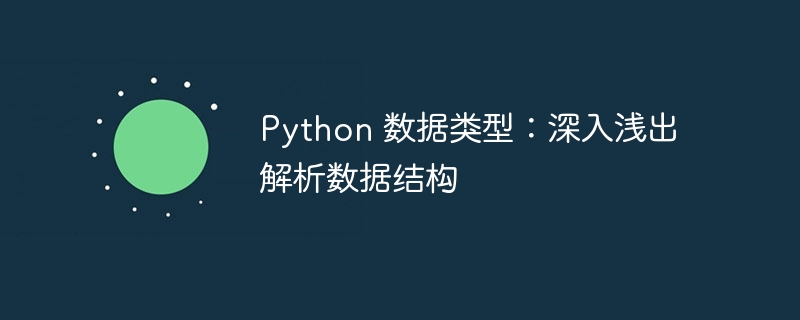

Data structure is a way of organizing data for efficient storage, retrieval and processing of data. python Provides built-in data structures, including:
Choosing the appropriate data type is critical to Python the performance and reliability of your program. The following are the selection criteria:
Common mistakes when using Python data types include:
When using Python data types, follow these best practices:
The above is the detailed content of Python data types: parsing data structures in simple terms. For more information, please follow other related articles on the PHP Chinese website!
 Commonly used permutation and combination formulas
Commonly used permutation and combination formulas
 How to refund Douyin recharged Doucoin
How to refund Douyin recharged Doucoin
 How to use the month function
How to use the month function
 Commonly used permutation and combination formulas
Commonly used permutation and combination formulas
 what does bbs mean
what does bbs mean
 What to do with the video card
What to do with the video card
 Detailed explanation of Linux fork function
Detailed explanation of Linux fork function
 Which is better to learn first, c language or c++?
Which is better to learn first, c language or c++?




